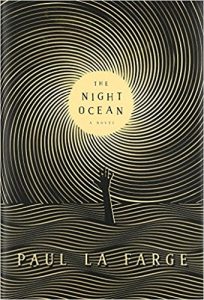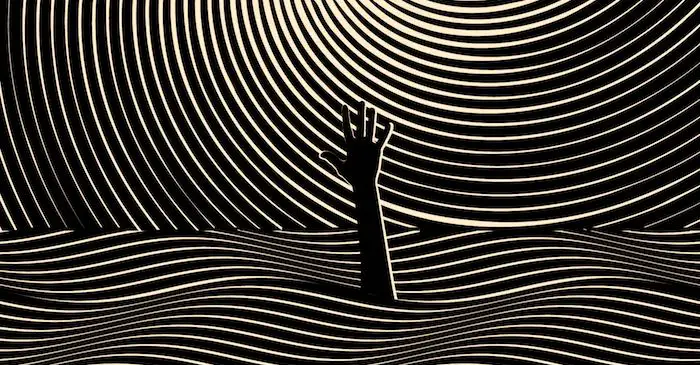 The Night Ocean
The Night Ocean
Paul La Farge
Penguin Press
Release Date: March 7, 2017
ISBN 978-1-1019-8108-5
I cracked open the cover of Paul La Farge’s novel The Night Ocean in trepidation, because Lovecraftian dark fantasy is not something I actively seek out. I will read a work if it’s considered “Lovecraftian” as long as I have a few recommendations urging me on (for example, Cherie Priest’s Maplecroft came highly recommended, and is marvelous), but I tend to be somewhat squeamish (what am I saying – I’m the definition of squeamish) so I tend to shy away from books that have a lot of “bloated”, “fetid” and “bulbous” in them. Or tentacles. China Miéville’s Kraken notwithstanding, I’m not a fan of tentacles.
So I was nervous to read The Night Ocean, seeing that the name H.P. Lovecraft was evoked in every single review, blurb and recommendation I read. But there were so gosh darn many recommendations, from people I know personally and from people I admire, that I knew I had to screw my courage to the sticking place and read the dang thing.
And you know what? There was nary a tentacle in the book. Well, not so, there were jellyfish. But they were… jellyfish. No more monstrous than what they truly are. Sometimes a jellyfish really is just a jellyfish (which doesn’t keep them from being terrifying, but still…).
And you know what else? The book is freaking fantastic.
To clarify – The Night Ocean is not Lovecraftian. The book is about H.P. Lovecraft, or rather, H.P. Lovecraft the man is at the center of the story. It is historical fiction, not dark fantasy. Which doesn’t mean things in it aren’t dark, or that parts of it aren’t rooted in fantasy (in fact, much of the book plays with what is real and what is created), or that doesn’t have stuff in it that’s just plain weird, but that’s the paint on the canvas, not the canvas itself.
The Night Ocean is a really a story within a story. The outwardly facing story is of Marina Willett, a New York psychotherapist who is trying to understand the disappearance – and assumed suicide, of drowning in a nearby lake – of her (estranged) husband, Charlie, from his psychiatric hospital in the Berkshires, where he was undergoing treatment for an earlier suicide attempt. Charlie, a writer, had become obsessed with the life of H.P. Lovecraft, specifically what transpired between the horror writer and 16-year old Robert Barlow in the summer of 1934.
Bobby Barlow was a fan of dark fantasy, and of H.P. Lovecraft in particular. The two had struck up a correspondence, and Bobby invited Howard to visit him in Florida during the summer, which Lovecraft surprisingly accepted – staying for two months. Over the next two years, Howard visited Florida for another extended visit, and Bobby spent time in New York with the older man. As Lovecraft was an assiduously private person, and not much of a celebrity during his lifetime, no official record exists of his time and relationship with Bobby. That is, until Charlie stumbles upon reference to an obscure book, titled Erotonomicon, published clandestinely by Black Hour Books.
When Charlie tracks down a copy of the rare book in Canada from the purveyor of Black Hour Books, L.C. Spinks, he finds that it is a journal, filled with erotic references written by Lovecraft during the two years that he spent with Bobby Barlow. This journal passed to Bobby upon Lovecraft’s death in 1937. Supposedly.
And that’s when the inward facing story starts. It’s the story contained in the Erotonomicon, and the story of the journal itself – which may be real, may be a forgery, may be fiction. It’s also the story of Bobby Barlow in the years following his relationship with Lovecraft, up until his apparent suicide in Mexico City in 1951. It’s the story of the science fiction/horror/weird fiction literary scene in New York in the mid-1900s, and the political turmoil of the second World War with the naiveté of a supposed revolution for the future. It’s the story of L.C. Spinks, and his role in the maintenance of H.P. Lovecraft’s reputation for both his admirers and later, his many detractors. And it’s the story of what happens when those we idolize turn out to be … less than perfect.
But both these stories – all these stories – are steeped in the notion of having to determine what is real, and what is imaginary, and where truth lies when the boundaries of both are fluid, and where phrases such as “transmigration of souls” muddies the water that washes up on the shore at your feet. Is it, as L.C. Spinks asserts, that the hoax is the hoax? H.P. Lovecraft was real. R.H. Barlow was real. Many, many of the names in The Night Ocean are real, they lived and breathed, they interacted. For real. Those who are fictitious feel real. Many of the events actually took place. Who’s to say others did not?
Oh, and you know the saying that you live on in your stories? Yeah… that. Make it darker. Make it weirder. And now you’re starting to get a sense of what The Night Ocean is about. And it’s glorious.
No tentacles required.
~ Sharon Browning

